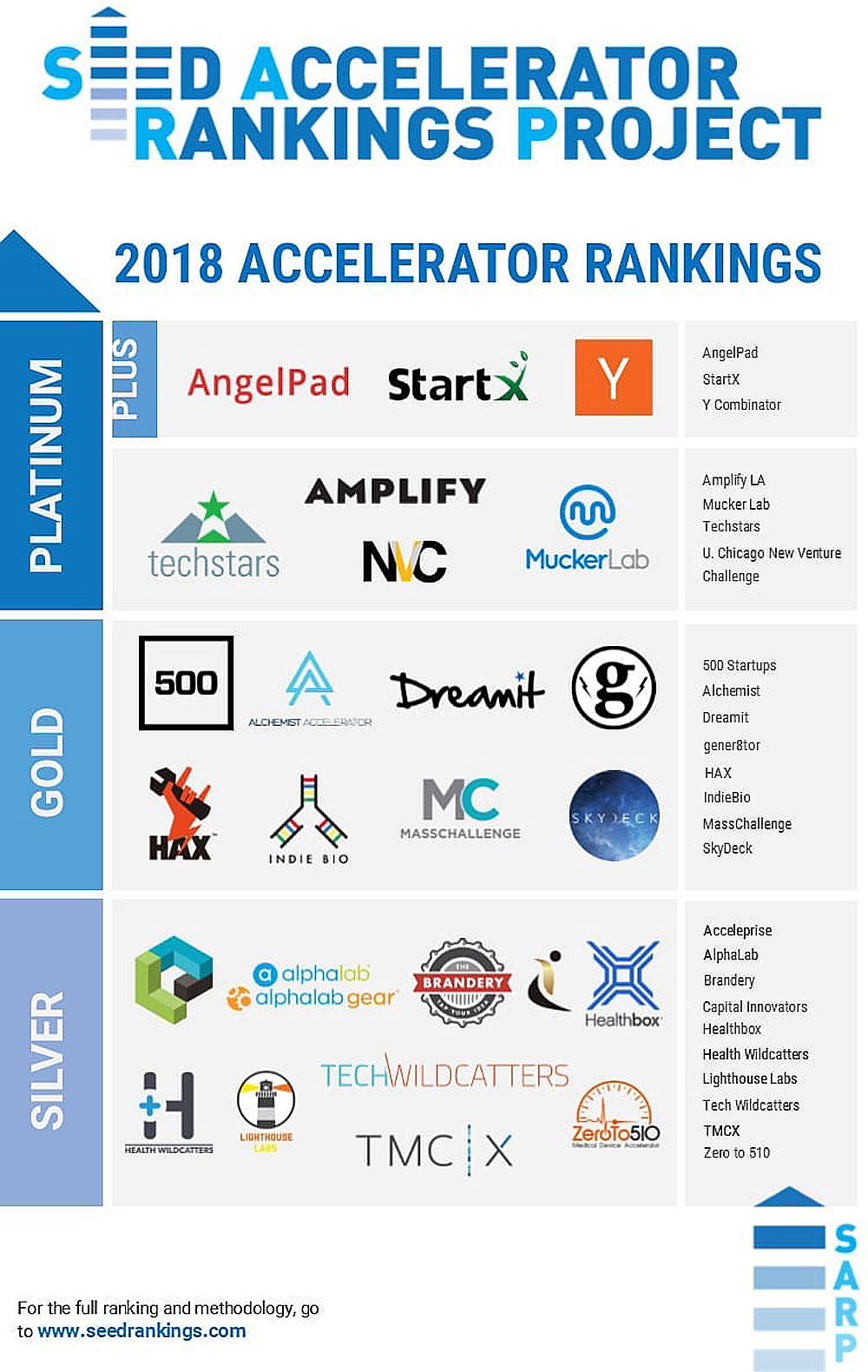Seaman Matthew Plucinski, right, from Roseville, MI, and Seaman Aaron Kiefer, from Los Angeles, watch in the pilot house on the Arleigh Burke-class guided-missile destroyer USS Chung-Hoon.

Seaman Matthew Plucinski, right, from Roseville, MI, and Seaman Aaron Kiefer, from Los Angeles, watch in the pilot house on the Arleigh Burke-class guided-missile destroyer USS Chung-Hoon.


Silver Bells in the City is our state capital’s 34-year tradition welcoming the holidays. Come to Lansing Nov. 16 for the dazzling Electric Light Parade and 50-plus free, family activities. Stay the weekend for a 5K run/walk and Brunch with Santa.
More information at www.silverbellsinthecity.org.




In what some people are speculating might be the first steps toward a major sports-team acquisition, JACK Entertainment is selling its Greektown Casino-Hotel to two other casino operators and property owners, the Detroit-based entertainment company said Thursday.
The contract, settled for $1 billion cash, will split Greektown Casino-Hotel between two entities. Penn National will acquire the operating assets of Greektown for approximately $300 million. VICI Properties will acquire the land and real estate assets of Greektown, for approximately $700 million.
The transaction is subject to regulatory approval.
In a statement, JACK Entertainment officials said Chairman Dan Gilbert and his family of companies are targeting the capital proceeds from the sale for investment in Detroit real estate and business development.
This may be considered another example of a trend in the gaming industry, according to Spectrum Gaming Group, a non-partisan consultancy that specializes in the economics, regulation and policy of legalized gambling worldwide. It predicts that merger and acquisitions, such as the Greektown deal, are “likely to ramp up in U.S. casino operations, as online gaming consolidation, in general, will continue, as sportsbook/online platforms and operators will be on the radar for U.S. operators and suppliers. Related to that, we expect European players to be hunting for U.S. acquisitions as well.”
Some observers wondered Wednesday if Gilbert and his Detroit-based companies may be putting together a plan and the necessary funds to purchase a larger asset – the Detroit Tigers. Company officials did not comment on these rumors.
In a statement, Matt Cullen, chief executive officer of JACK Entertainment, said the company purchased Greektown Casino-Hotel as a part of its overall economic development strategy in Detroit.
“After investing hundreds of millions of dollars of capital into redesigning and remodeling the property, as well as working with our outstanding team members and their unions to dramatically improve operations and customer service levels, Greektown Casino-Hotel is positioned for further future success,” Cullen said in a statement.
“We are confident that Penn National is the ideal steward to take Greektown to the next level of growth,” Cullen added. “We chose to sell to Penn National, in large part, due to its strong culture and the quality of its leadership and team. They are a professional operator that Greektown team members will enjoy working with as they continue to deliver excellent service to our guests.”
The transaction requires regulatory approval, both at the federal and state levels.
“Our purchase of Greektown Casino-Hotel five and a half years ago, soon after its bankruptcy, allowed us to work with the great team at the property to create a winning culture and a vibrant business,” Gilbert, Chairman of JACK Entertainment and Founder and Chairman of Rock Ventures, said in a statement. “The sale to Penn National and VICI Properties will allow that strong trajectory to continue and provide additional capital to continue our strategic investments in our Detroit real estate and business initiatives.”
According to the company, JACK Entertainment will work with Penn National “to ensure a smooth transition for all guests and team members.” During the transition, the property will remain open for business as usual.
At the sale’s closing, officials said Greektown team members will transition with compensation and benefit packages at least as favorable as they currently enjoy. All unions that currently represent Greektown team members will be recognized and all collective bargaining agreements will be assumed by Penn National at closing.
The sale is expected to be finalized sometime in 2019. JACK Entertainment is continuing a strategic assessment for its remaining gaming properties. JACK Entertainment is a Detroit-based urban casino gaming company which owns and operates gaming properties in Cleveland, Cincinnati, Baltimore and Detroit and racing facilities in Ohio and Kentucky.
Employers searching for talented individuals who are career minded, excellent multi-taskers and goal orientated are looking to women who chose to focus on caregiving, but are now shifting that initial interest to bringing new skills and energy to the workforce.
Finding highly qualified female candidates can be difficult, however, and companies are working hard to recruit, train and develop women as executives and leaders. Businesses are looking at women-led “onramps” such as Mom Corps, a division of Corps Team, and other placement firms that focus on identifying seasoned females ready to go back to work. They are also holding job fairs and recruiting events aimed at moms and caregivers, revamping human resource policies and practices to seek diversity, as well as developing family-friendly policies and amenities that attract parents who need flexibility and support.
The right attitude
Businesses that are successful at hiring moms back into the workforce have one thing in common: attitude. For example, PricewaterhouseCoopers calls professional women looking to return from career breaks “potential-plus talent,” and encourages its divisions to create “career returner programs” that offer an internship-like program that lets women ease back into the workforce and new roles over a three-month period. These so-called “returnships” have gained traction at a variety of companies, including Apple, PayPal, and Goldman Sachs.
Moms looking for ownership opportunities also are starting their own companies through programs such as Build Institute, a self-described entrepreneur academy in Detroit. These businesses create jobs, boost women’s earning potential and leverage women’s talents for the betterment of the bottom line. Build Institute graduates include April Anderson of Good Cakes and Bakes, a nationally recognized baker (and mom).
Giving women a welcoming place to learn new skills and develop a business plan, while also giving them childcare and schedule-conscious options, such as weekend workshops and nighttime classes, is essential, said Build Institute Executive Director April Boyle, who tells stories of her return to the workforce.

“(As a mom), you’re always on the lookout for an opportunity to make a connection, to innovate, to learn and to grow. You can be a lifelong learner and have that entrepreneurial mindset while raising your kids,” said Boyle, who is the mother of three boys. “You’ve just got to be more creative and find the time in different nooks and crannies. That’s what we do at Build—we help foster and train that hustle muscle.”
The need for talent—especially for that of returning caregivers such as moms—is important to today’s employers for a simple reason: They need qualified workers to fill their job openings.
The U.S. jobless rate dropped to 3.9 percent in July 2018 from 4.0 percent in June, a number that has remained fairly steady throughout the year. That also is the lowest unemployment rate for the nation since December 2000. Recruiting in general in a hot job market is tough, so businesses have to look widely for qualified candidates.
Work-life balance still a question
Still, there is a disconnect with how employees, particularly females and those with children, feel about balancing work and family. According to an August 2018 FlexJobs survey of 1,100 parents with children 18 and younger living at home, working parents rank work-life balance (84 percent) ahead of salary (75 percent) when considering whether or not to take a job. About 41 percent of all families in the United States include children under age 18. The labor force participation rate for all women with children under age 18 was 71 percent in 2017, up slightly from the prior year.
Millennials and members of Generation Z will feel sensitive to this fact, so as recruiters look to hire these younger workers, they need to think about how to hire and retain women who want families or take on other caregiving roles, said Denise Chase, director of Strategic Initiatives for the Mom Project. The Chicago-based digital marketplace connects moms with companies that need educated and experienced people for temporary projects, permanent posts or to fill in when an employee goes on maternity leave — something Allison Robinson, founder and CEO, calls a “maternityship,” a term the firm has trademarked.
By mid-2018, the Mom Project had boasted more than 50,000 users—a major milestone, considering it was only launched in 2015. While the firm’s promotional material refers to mothers as “a major growth engine in our economy,” the reality is that some 43 percent of skilled American women leave the workplace after becoming mothers. The Mom Project’s goal is to help women remain active in the workforce at every life stage, as well as help employers design a workplace where caregivers of all kinds feel supported.
“Our focus is to support women across their life stages, from when they’re anticipating becoming a mom to parenthood to when they’re evaluating what kind of commitment they want in later stages of their career,” Chase said. “Our platform is designed to help them understand from Day One, and transparently, what their work opportunities are. Some may want to work full time. Some may want project work. Others may want to be meaningfully engaged, but maybe not 12 months of the year or 40 hours a week.”
Considering the whole person
Part of what employers need to do is think about what the whole person wants in terms of work, flexibility and benefits, Chase added. For example, the Mom Project helps site users with household duties, introduces them to time-saving services and coaches them through issues such as how to ask for maternity leave and the like.
Having a job makes Angela Patton feel like she’s a better woman, wife and mother. Patton stayed at home for a few years after her son was born, but she decided to go back to work not only for her benefit but “to inspire my kids to find a career of which they are proud and that utilizes their skills in the best way possible.”
She said being a mom affected everything. “I worked since I was 15, for many years two jobs at once. I lost my job during the recession right before my son was born, and it was a huge adjustment for me. I went on countless excruciating interviews when my son was a baby and, when I wasn’t offered a job, I took it as a sign that working full time was no longer what I was meant to do, and that was ok.”
Finding a job she loves—she is an adjunct communications professor at Walsh College, where she teaches both written and oral business communications—was worth the effort, Patton said.
“I finally found a job that I love to do, where I help others, and it makes a huge difference in my life,” Patton said. “I actually don’t mind going to work! Being able to work around my kids’ school and sports schedules is something for which I am very grateful, and I hope my kids will think about looking for a family friendly career when the time comes. I still miss a game here and there, but I do my best to show up. I want my kids to have a career that they love, where they can contribute to society, even if it’s in a small way.”
At the University of Michigan, Jennie McAlpine focuses her job on all 85,000 people associated with the university’s multiple work sites and students. “That’s a lot of people and a lot of children,” said McAlpine, senior director of Work-Life Programs for UM. Finding ways to serve moms, dads and caregivers is essential to maintaining the health, happiness and longevity of that workforce, she said.
Her duties include directing UM’s children’s centers, work-life resources online and on-site, as well as referral services that help parents find caregivers, childcare and other help with family life. For example, UM has Family Helpers, a service that partners students or retirees looking to help provide housesitting, pet care, elder care, housecleaning, yardwork and more.
“It’s a huge win-win because it allows students and retirees to work when they want to work and helps parents with things they need to be able to work,” McAlpine said. “The university wants to attract and keep wonderful people, so that means caring for the whole person and their families.”
UM is helped by having forward-thinking administration and staff who want unique programs, McAlpine says. It also is important to have the latest in benefits to remain competitive with other colleges. That means offering lactation support, toolkits for employees to talk to their bosses about maternity leave or childcare issues, flexible work and much more.
At United Shore in Troy, Laura Lawson, chief people officer for the firm and mother of two boys, has put a lot of thought into the kind of programs the mortgage and financial-services company offers. That includes making sure there are HR benefits, as well as other niceties that make balancing a family and work a little easier.
The firm recently held a job fair designed to attract moms who were ready to get back in the workforce and has created special training programs to ensure workers who have had a break in their career can get right back into the groove. Plus, United Shore has classic benefits such as dry cleaning services that deliver and a gym on-site. It also hosts “Pizza Fridays,” where employees can grab dinner on their way out of work and have one of life’s necessities covered as they walk into the door at home.
“It’s a ‘surprise and delight’ kind of thing,” notes Lawson. “Everything we do has an intention behind it to make work easier. We also offer training, appreciation and continuous improvement opportunities—but we also understand the importance of reducing stress and that means having pizza on Fridays. I’m a mom—I get it.”
Giving women and families a hand
Having help like this, whether it is through Pizza Fridays, lactation specialists or onramp programs, is part of showing moms that you want them at your office. There are events and support programs all around most major cities that are giving women a hand when they want to get work done.

Places like Honey for Moms, an Ann Arbor-based “boutique clubhouse,” offers a co-working space with childcare, yoga classes and other services. Krista McClure recently expanded her Detroit Parent Collective, a co-working space with on-site childcare, a cooperative preschool and supportive programming that focuses on family needs.
“It’s really mind-blowing how this simple concept has gained so much traction within the Metro Detroit area,” McClure said. “Who knew a space for families—where divides are crossed—would grow into something more powerful than I ever imagined. Every strategic move that I’ve made has been a conscious one: for families.”
There also are events, such as Mother Honestly, a summit that aims to “inspire, empower and equip” women with children, giving them the tools to unite their goals as a mom with their hopes as a career person. The event was created by Blessing Adesiyan, a mother of two and chemical engineer by profession who is also working on her MBA.
Having a team to help you get through these years and come up with ways to work well when in the office is an important part of helping moms see that they can be a good parent and a good employee, said Julie Pickens, an Ohio mom who started a saline nose wipe company with a colorful name. With “Boogie Wipes” under her belt, Pickens has since gone on to create myFlipShade, an iPhone accessory that blocks solar glare and provides a degree of privacy for the smartphone user.
“The best advice I could really give to moms or anyone when you want to get back into the workforce or create your own business would be to surround yourself with amazing people that you can learn from, both young and old,” said Pickens. “You can’t do anything alone and it truly takes a village to get things moving.”
For April Boyle, trying new things is among her top words of wisdom for moms. That and networking.
“Join some clubs. Volunteer at your kids’ school. Sit on a board as a volunteer,” she added. “You’ll keep your skills sharp and feel confident when you’re ready to go back to work.”
Angela Patton agrees. She believes having a job she enjoys and a family she loves is the best of all worlds.
“Everyone has a skill or talent that can help make the world a better place.”
Businesses of every size – whether it was small mom-and-pop shops or mid-size, high-growth companies or even the biggest of the big – were watching the midterm elections to see what would happen and how the economy might change as a result.
In Michigan, the stakes and impact of the midterm elections was high as the state’s governor and attorney general, U.S. Senate seat and many other Congressional districts were up for grabs. Even longtime seat holders, such as Debbie Stabenow, faced impressive competition for their positions within the federal government. In other words, no one was safe in the 2018 midterms.
The results were surprising in some ways, especially in the state’s three ballot proposals. Former state Democratic Senate Minority Leader Gretchen Whitmer will be Michigan’s next governor with a victory over Republican Attorney General Bill Schuette. Whitmer will be the second woman elected as Michigan governor.
Proposal 1 was approved by a 56-44 percent margin, becoming the first state in the Midwest to make recreational marijuana legal in Michigan with some sizable notes on how, when and where. Proposal 2 passed, significantly changing the way Michigan’s political lines are drawn for congressional and state legislative districts. Voters also approved Proposal 3, bringing significant changes to Michigan’s election law.
Some call these midterm elections “The Year of the Woman” for good reason. For example, a Muslim woman from Detroit has won the congressional seat long held by Democratic Rep. John Conyers, who stepped down amid sexual harassment claims by former staffers. Democrat Rashida Tlaib was elected to represent Michigan’s 13th House District, defeating three other candidates, including a write-in campaign by Detroit’s City Council president, Brenda Jones.
Officials said that voter turnout in the state’s midterm elections was the highest it had been in 56 years. The unofficial results, released by the state of Michigan, put turnout at 58 percent of registered voters. Compare that to 2014 when turnout was the lowest it had been in 24 years at about 43 percent of registered voters.
Voters out in droves
Across the state, every county increased turnout about 7 percent between 2014 and 2018. The biggest changes occurred in Oceana, Grand Traverse, and Kent counties, with voter turnout increases of 23 percent, 19 percent and 19 percent, respectively. Also, Leelanau and Keweenaw counties held onto the top two spots for overall turnout from 2014 to 2018.
Proposal 2, an anti-gerrymandering ballot measure sponsored by Voters Not Politicians, won at the ballot box. Michiganders soundly rejected gerrymandering, the manipulation of electoral maps to ensure that one party remains in power.
“Michigan has a long tradition of standing up to fight back against the status quo” said Emily Wietecha, Chapter Leader of Represent Metro Detroit. “This election cycle was no exception. With so much at stake, we knew that coming together to establish these crucial reforms was our only way to make a stand.”
Nationally, people including Stephanie Schriock, president of EMILY’s List, were enthusiastic about Michigan’s election results and the potential impact on the state’s economic fortunes moving forward in the years to come.
“Given Gretchen’s unimpeachable record, we know that she will continue to be a relentless fighter for the people of Michigan. Gretchen’s leadership in the Michigan state Legislature was unmatched as she worked to solve the state’s toughest problems like health care expansion and expanding economic opportunity,” Schriock said in a statement. “Gretchen is the ally Michiganders deserve after two terms of Governor Snyder’s disastrous leadership. Progress can no longer wait.”
Schriock also lauded Tlaib’s victory, noting the economic advantages it poses.
“Rashida Tlaib will undoubtedly be a fierce advocate for Michigan’s 13th District fighting to expand economic opportunity, strengthen Michigan public schools and protect our environment. Rashida has proven that she won’t back down from a tough fight and when it came to protecting her constituents from dangerous pollutants in the Detroit riverfront, she took on the Koch brothers and won,” she said in a statement.
For example, Tlaib has said she will fight for Medicare-for-All, a $15 minimum wage, equitable funding for public schools, debt-free college, civil rights rooted in equity, and fair immigration reform, fight climate change with a Green New Deal and more.
Business impact seems positive
Smaller businesses also were happy to see the midterm elections completed with results likely to please these entrepreneurs, said Rachel Lutz, owner of three retail stores in Detroit: The Peacock Room, Yama and Frida.
“I think the time period leading up to elections can create a lot of anxiety in consumers. Any finality leads to stability, regardless of the actual election results,” Lutz said. “Many customers feel the post-election cue to start thinking about the holidays.”
Nationally, Nigel Green, founder and chief executive of deVere Group, said he believes the Democrats gaining control of the House of Representatives is likely to drive a rally in U.S. financial markets into the year-end.
“This U.S. bounce can also be expected to positively impact global financial markets, given the high correlation between Wall Street and risk assets elsewhere,” Green said in a statement. “However, it can be reasonably assumed that this rally will be relatively short-lived as it could then be offset by legislative gridlock in Washington. This will halt deregulation legislation, which in turn will hurt sectors such as banking, energy, industrials, and smaller companies that stood to gain most from looser controls. Pharmaceuticals may suffer as the Democrats seek to bring down drug prices.”

It may be an online world we’re living in, but companies like Hewlett Packard Enterprise (HPE), one of two companies split off from one of Silicon Valley’s iconic pioneers three years ago, still need a place to house a growing number of staff.
For HPE, the division of the former Hewlett-Packard (a separate corporation now called HP Inc.), a new campus will be taking shape as part of the CityPlace development in Springwoods Village, located in Spring, Texas.
The project is the result of a joint venture with Patrinely Group, USAA Real Estate, and CDC Houston.
The HPE development is scheduled to break ground in the fourth quarter of 2019 and will consist of two buildings located in the southwest corner of East Mossy Oaks Road and Lake Plaza Drive. It will include approximately 568,000 square feet of rentable space.
The area will become home to the fourth major corporation to be located in CityPlace at Springwoods Village, joining HP Inc. (HPI), Southwestern Energy (SWN) and the American Bureau of Shipping (ABS).
The facility to be built will support customer engagement, sales operations, supply chain and other global functions for the company, which has two groups: one that deals with servers, storage, networking, consulting and support, and another that provides financial services.
Plans for the new campus are still in development but may include a fitness center, and café with an open courtyard space adjoining the structure. There is also an expectation that LEED certification will be a goal.
Antonio Neri, president and CEO of HPE, said the city of Houston “remains a top location” for the company. “We asked our employees what they were looking for in a new site (and they said) they wanted a vibrant setting, easy access to amenities and major highways and a location close to their homes. CityPlace checked all of those boxes for us.”
A representative of Patrinely Group is CEO Robert Fields, who said the opportunity to develop the campus is a testament to the attractiveness of CityPlace.
“We are creating a unique, walkable, mixed-use destination,” said Fields, noting that the addition of HPE is a major milestone that reinforces the strength of the new urban center in north Houston.
The master developer of Springwoods Village is CDC Houston. Warren Wilson, executive vice president, said the organization is pleased with the continued momentum of the overall development.
Additionally, the venture recently announced the start of construction for CityPlace 1, which has 122,700 square feet of office and 26,900 square feet of ground-floor retail available for lease, located directly across from a one-acre public plaza.
 It’s been only a few weeks since the launch of one of the first Association Health Plans made possible as a result of changes to the Affordable Care Act, but both the Small Business Association of Michigan (SBAM) and the Michigan Business and Professional Association (MichBusiness) say the market response has been positive ahead of the earliest date coverage could take place, which is January 1, 2019.
It’s been only a few weeks since the launch of one of the first Association Health Plans made possible as a result of changes to the Affordable Care Act, but both the Small Business Association of Michigan (SBAM) and the Michigan Business and Professional Association (MichBusiness) say the market response has been positive ahead of the earliest date coverage could take place, which is January 1, 2019.
The initiative, called Transcend AHP, was made possible following an Executive Order by President Donald Trump that was signed in October 2017 and regulations that were published in June by the U.S. Department of Labor.
A key enhancement to the Affordable Care Act, which is built into Transcend AHP, is for smaller groups, including those in chambers of commerce, to gain access to the kind of comprehensive health insurance programs previously available only to companies with large numbers of employees.
“We are very pleased with the response we’ve received so far,” said Scott Lyon, senior vice president with SBAM.
Jennifer Werner, senior vice president of insurance operations at MichBusiness, echoed that assessment.
“The interest we’ve had for Transcend AHP has been very positive, with more than 1,200 total requests for quotation,” she said, referring to queries that have flowed through both MichBusiness and SBAM.
Both MichBusiness, which is affiliated with Jennifer Kluge, CEO of Corp! magazine, and SBAM have a long history of working with Blue Cross Blue Shield of Michigan and Blue Care Network, the sole provider of coverage under Transcend AHP.
Werner noted that firm agreements to sign up with Transcend AHP have been signed by three chambers of commerce in Michigan since the initiative was announced in October and there are others that have signaled they will likely come on board.
Regulations enabling the establishment of Transcend AHP were published in June by the U.S. Department of Labor, which expands options for small businesses and their employees. Under the AHP model, groups are now able to band together by geography or industry to obtain health care coverage as if they were a single large employer.
Central to the concept is the ability of organizations like SBAM and MichBusiness to strengthen the negotiating power of small businesses by creating larger risk pools and greater economies of scale.
Before the advent of Transcend AHP, small business operators did not have access to plans available only to large employers.
Under the AHP regulations, businesses with as few as one person and up to 50 are eligible as long as they meet certain membership requirements. Both SBAM and MichBusiness officials say they are encouraging small business owners to ask their health insurance agent for more information. They can also visit www.transcendmichigan.org.
 There is no job within the hospitality field that is below you, according to hotel expert Jay Stein. He believes it is how you elevate that job and its role within the hotel you serve that defines you and sets a tone for your future success.
There is no job within the hospitality field that is below you, according to hotel expert Jay Stein. He believes it is how you elevate that job and its role within the hotel you serve that defines you and sets a tone for your future success.
Stein is Chief Executive Officer of Dream Hotel Group, overseeing the evolution and expansion efforts of the Company and its portfolio of brands: Dream Hotels, Time Hotels, The Chatwal and Unscripted Hotels. The company has been growing quickly of late. This year, Dream Hotel Group is projected to triple in size from 18 hotels, predominantly via management deals, an impressive 229 percent growth from 2016 to 2020.
With over three decades in the hospitality business and more than 20 years with Dream Hotel Group’s predecessor, Hampshire Hotels Management, Stein has served in a variety of property and corporate roles with both large and boutique hotel brands, including Hilton Worldwide, Starwood Hotels and Resorts, and Doral Hotels.
Starting at the bottom
Stein knows what he is talking about when it comes to working at the bottom of the hotel industry and rising up based on attitude and hard work. Stein began his career in 1983 with Hilton Worldwide at the Vista International Hotel in the World Trade Center in New York City. A veteran of food and beverage management, he turned his sights to general hotel operations in 1987 and quickly rose from the ranks to become Managing Director for three Doral Hotels in New York City.
After taking those properties through the transition to Starwood Hotels and Resorts, he joined Dream Hotel Group as Executive Vice President of Operations and was soon promoted to Chief Operating Officer in 1997, overseeing hotel operations and playing a vital role in the Company’s expansion efforts.
These days, Stein does a lot of work around researching new areas for growth – the company has been looking at Detroit for some time now, he says – as well as promoting Dream Hotel Group as a whole. One of his favorite jobs was hiring, even though it was a lot of work. He believes hiring the right people has been key to the business’s success overall.
“I had to hire a lot of staff as a department head – I started in food and beverage – with both high and low skills. Then, as a general manager, I did hiring of all kinds. I probably hired hundreds of employees. So that means I’ve done lots of interviews,” Stein said.
Here are some of the tips he has on hiring and knowing how to spot talent in any industry:
• Get a sense of a person. The big ask is whether they have the “soft skills” for a particular job within your field. Many HR people use software or computers to figure out if someone is good for a job. But Stein says there is nothing as important as talking to people in person and getting a sense of them. “Hospitality is not something that comes naturally to people so you want to find people who it does comes naturally to,” he said. “Teaching someone to check a person into the hotel is easier than teaching someone to be hospitable.”
• A potential hire shouldn’t have an attitude about the job they’re going to do. “If you find it demeaning to hold a door open, then you shouldn’t be a doorman,” Stein says. “You can make good money as a doorman, but if you find it innately demeaning, then it’s a bad fit.” That said, anyone who is interested in hospitality should see every role as important, he notes. Think of it as being an actor and doing your role or part to make the hotel warm and comfortable. You have to create an atmosphere that’s worth paying for, he says, especially in a high-end hotel setting.
• Think about the physical aspects of the job. When Stein was hiring in the food and beverage area, he sometimes couldn’t tell if a person would make a good waiter or waitress on paper. It was only when he saw them move that he knew. Being a waiter or waitress requires a kind of athleticism that has to be innate, he said. “To be a really good one, it requires a certain ability to move through a room gracefully with trays. There’s a whole athletic aspect to how a waiter works,” Stein says. “So I developed an interview process: I’d have them pick up a tray, put something on the table, pick up the tray and bring it back. I’d watch them do it and I found it was a great predictor of their future performance.”
• Respect everyone. Stein said his father, who was a great cab driver, taught him that everyone deserves respect. That means every customer that come through a hotel’s door deserves respect. He found that talking to any of his employees was better and their performance matched when he brought respect to the conversation or interaction.
• Give every upset customer a chance to do better. Sometimes, the front of the house or the public spaces are stressful. When people are upset, they tend to take it out on the people around them and that can include a hotel’s employees. “Sometimes you’re in a no-win situation. Nobody likes that. The idea that the customer’s always right isn’t always true, but we are the hotel manager and we’re running the operation. If you have an irate guest, it doesn’t help the situation to escalate the situation. We need to try to diffuse that situation, to play off someone else. Otherwise, say excuse me, shut door, scream for a few minutes and then come back out front. … Disney is a great example. The characters never come out of character when they’re in front of people. When you’re with the public, that’s showtime. When you’re behind the scenes, you can relax.”
Organizers of Credit Union Trust have announced receipt of approval to proceed with the establishment of a new, limited purpose financial institution.
The approval comes from the Michigan Department of Insurance and Financial Services, Office of Banking, and follows an application that was made in July and previously reported HERE in Corp! magazine.
“We’re pleased and very excited to be moving forward,” said Robert Sajdak, who was named as president and CEO of Credit Union Trust in the application. “As we said back in July when we announced our application, now that Credit Union Trust is formally approved, once it is organized, the real work begins and we will soon begin hiring professionals, implementing plans and contracting for systems and services.”
Credit Union Trust plans to open in late Q1 2019 and will be headquartered in leased facilities located at 31155 Northwestern Highway, Farmington Hills, Michigan.
Organized by a group of seven prominent, Michigan-based credit unions, Credit Union Trust will be both a Michigan limited purpose bank and a credit union service organization (CUSO). It is said to be the first such entity in the state and is being established to serve the needs of Michigan credit union members.
Officials said that while credit unions routinely provide a range of wealth management services for their members, before the initiative to seek approval for Credit Union Trust, they were unable to directly provide fiduciary services such as trusts.
Change in Michigan law prompted move
A change in Michigan law that took place in 2016 prompted the planning that has led to the announcement.
“We know our members, the market, and the industry,” said Sajdak. “We will begin immediately implementing a tightly-focused business plan to serve the needs of our founding credit union members, and all Michigan credit union members who previously had to go outside the familiar credit union family for trust services. This is a service whose time has come and it’s one our members need.”
Officials say this is an important step for Michigan’s approximately 5.23 million credit union members and the industry as a whole. Baby boomers are expected to transfer $30 trillion in assets to their heirs over the next few decades and a trust provides them a way to avoid the time and expense of probate court, as well as a way to minimize estate taxes.
“At a time when many traditional banks and trust companies are raising minimum requirements to more than $1 million dollars, Credit Union Trust is focused on serving all members and will administer a much fuller spectrum of trust accounts and balances,” added Sajdak.
The organizers are executives of the seven, member-owned credit unions and include: Alpena Alcona Area Credit Union, headquartered in Alpena with seven locations; Community Choice Credit Union, headquartered in Farmington Hills with 20 locations; ELGA Credit Union, headquartered in Burton with 11 locations; Frankenmuth Credit Union, headquartered in Frankenmuth with 23 locations; Honor Credit Union, headquartered in Berrien Springs with 24 locations; Members First Credit Union, headquartered in Midland with 11 locations; and Team One Credit Union, headquartered in Saginaw with 12 locations.
 There is something about the original Stormy Kromer cap that makes it an iconic design. The six-panel hat is worn by kids, millennials and hard-working people of all ages because it is warm, well fitted and good looking.
There is something about the original Stormy Kromer cap that makes it an iconic design. The six-panel hat is worn by kids, millennials and hard-working people of all ages because it is warm, well fitted and good looking.
That also is why Stormy Kromer and the Original Stormy Kromer Cap recently claimed the title of “Coolest Thing Made in Michigan.”
Announced during the second annual MFG Excellence Awards, the “Coolest Thing Made in Michigan” People’s Choice Award was the culmination of a months-long social media campaign narrowing a wide variety of Michigan-made products down to a competitive Top 10 before the winner was revealed live on-stage by the Michigan Manufacturers Association (MMA), MLive and the Luminous Group.
“I speak for every member of our team when I say thank you for this honor; it means the world to us that Michigan loves our Stormy Kromer cap as much as we love to make it,” Gina Thorsen, president of Stromy Kromer, a division of Jacquart Fabric Products, said in a statement.
“High-quality apparel can be hard to find and winter wear especially can be viewed as disposable,” Thorsen added. “We believe different — if it’s cool and it’s made in Michigan, it deserves to last a lifetime and we’re thrilled to see our caps continuing to impress more than a hundred years after the first one came to life.”
 Talent and quality
Talent and quality
The globally recognized cap, made by Jacquart Fabric Products in Ironwood, is a unique six-panel hat hand-stitched by some of the world’s best craftspeople. Rich, warm and wonderfully-fitted, the cap has been available since 1903 and continues to build on its legacy of being the one piece of winter apparel every person has to own.
“When you talk about ‘cool’ and ‘Michigan-made,’ the competition is intense; Michigan manufacturers innovate on a scale rivaling anything found in the world and they do it while utilizing the world’s best talent and finest quality,” Chuck Hadden, MMA president and CEO, said in a statement.
The full list of Top 10 finalists for “Coolest Thing” included:
The MFG Excellence Awards also featured the presentation of the MFG Lifetime Achievement Award to Harry Leaver, executive director of the Central Michigan Manufacturers Association, and Al Glick, owner of Jackson-based Alro Steel, and many other awards for leadership, talent development, innovation and community impact.
The smiling children’s faces watching the 2018 Rochester Hometown Christmas Parade will have a special meaning for the Parade’s Grand Marshals, Dr. Bradley and Mrs. Barbara Barnes. They have spent their lives working to improve the health and well-being of the greater Rochester area’s children.


Francis McNamara, Comcast’s senior manager of installations and service in Lansing, was presented with the Patriot Award by the Employer Support of the Guard and Reserve (ESGR.) McNamara was recognized for his mentorship and encouragement of active duty and reserve military employees at Comcast.

 Five years ago, Bill Birndorf, owner of Commerce-based Apple Marketing Company, was watching a television news story about people in financial strife and struggling to buy food for the holidays to feed their families. An idea was born.
Five years ago, Bill Birndorf, owner of Commerce-based Apple Marketing Company, was watching a television news story about people in financial strife and struggling to buy food for the holidays to feed their families. An idea was born.
Birndorf, founder of Higher Hopes!, decided then and there that no one should face such a dilemma when it comes to Thanksgiving or any other major holiday meal.
To that end, Higher Hopes! will distribute 1,000 complete Thanksgiving meal kits so that families can enjoy dinner at home with loved ones. These “kits” contain everything from a 12-14-pound turkey, and all the sides including stuffing, Michigan potatoes, yams, all of the ingredients for green bean casserole, Zoup! Chicken Broth, Jiffy Corn Muffin Mix, cranberry sauce, apples, spices, and Coca Cola products, all topped off with Cooper Street Cookies for dessert and much more.
Higher Hopes! also includes disposable plates, roasting pans, and cutlery for families. All of which is provided to families who have children enrolled in the Early Head Start Child Care Partnership Programs, which encompass the Early Head Start, Head Start, and Great Start Readiness Programs in Detroit.
As an agency partner of Gleaners Community Food Bank of Southeast Michigan, Higher Hopes! will utilize Gleaners facilities to store all food donations and pack up the meal kits.
Pack-Up Day will be held at Gleaners on Saturday, November 17 and Distribution Day will take place on Monday, November 19 at four Head Start sites in the city of Detroit. Around 300 volunteers will assist in packing and distributing over 65,000 pounds (four tractor-trailer loads) of food for the Thanksgiving holiday to families who have children enrolled at The Order of the Fishermen Ministry Head Start, Focus Hope Head Start, Star Fish Head Start, United Children and Families Head Start, Development Centers Head Start, New St. Paul, and Matrix.
“Many people are not aware that 1,414,700 people in Michigan struggle with hunger and food insecurities, 356,930 of which are children,” says Birndorf, founder of Higher Hopes! “Many of these families have experienced homelessness or live in terrible situations, and most, if not all, are reliant on public assistance, church assistance, shelters, soup kitchens, and charities to feed themselves and their children. We continue to raise funds and are amplifying our efforts to support the children and families who urgently need our help.”
All told, since inception, Higher Hopes! has distributed close to 800,000 pounds of food and they look forward to making the million-pound mark in 2019, says Birndorf.
“A million pounds of food, conservatively, is over 500,000 meals, which is equal to feeding every fan attending more than 23 sold out Red Wing games at the new Little Caesars Arena!” he says.
Some of Higher Hopes! corporate and foundation sponsors include Apple Marketing Company, Quicken Loans, Meijer, MJS Packaging, Pinnacle Homes, SpartanNash, Michigan Potato Industry Commission, The Applebaum Family Compass Fund, The Dresner Foundation, The Helen L. Kay Charitable Trust, The William and Audrey Farber Family Foundation, Famous Dave’s BBQ, Costco, Cooper Street Cookies, The Libman Company, Chelsea Milling, Coca Cola, Franklin Publicity, McKeon Products, Lormax Stern, Exit 14 and The Envelope Printery.
 With holiday promotions and marketing starting the day after Halloween, retailers are hoping shoppers will enthusiastically respond to their sales and promotions this season, boosting their bottom line during the all-important fourth quarter.
With holiday promotions and marketing starting the day after Halloween, retailers are hoping shoppers will enthusiastically respond to their sales and promotions this season, boosting their bottom line during the all-important fourth quarter.
The National Retail Federation, a trade group that makes annual holiday sales predictions, said it expects holiday retail sales in November and December, excluding automobiles, gasoline and restaurants, to increase between 4.3 and 4.8 percent over 2017 for a total of $717.45 billion to $720.89 billion. The forecast compares with an average annual increase of 3.9 percent over the past five years.
“Our forecast reflects the overall strength of the industry,” NRF President and CEO Matthew Shay said in a statement. “Thanks to a healthy economy and strong consumer confidence, we believe that this holiday season will continue to reflect the growth we’ve seen over the past year. While there is concern about the impacts of an escalating trade war, we are optimistic that the pace of economic activity will continue to increase through the end of the year.”
Holiday sales in 2017 totaled $687.87 billion, a 5.3 percent increase over the year before and the largest increase since the 5.2 percent year-over-year gain seen in 2010 after the end of the Great Recession.
“Right now, retailers are focused on carving out a bigger piece of the online pie,” said Joline Uichanco, an assistant professor of technology and operations at the University of Michigan in Ann Arbor.
“Amazon is the one to beat since they capture almost half of the online retail sales in the U.S. But other e-tailers are trying to compete by matching the convenience Amazon is offering to customers, with little regard to the cost of fulling orders,” Uichanco said. “This is similar to Amazon’s strategy when it first started of ‘deliver at any cost.’ It will be interesting to see whether their strategy will pay off.”
Malls out of the picture?
Jennyfer Crawford, a small-business expert and founder of All Things Detroit, a small-business marketplace and event space, said she sees small- to medium-size retailers thinking about how to find one-of-a-kind or limited-edition products for their loyal followers.
“The mall is dead; no one is shopping there. They want to make their purchases locally with small businesses,” Crawford said. “Consumers definitely want products that are unique, especially for the holiday season. Businesses that can connect with their clients and offer personal attention will find they have created a buzz and anticipation in their customers.”
Uichanco’s research includes studying how retailers using an omnichannel model that combines physical and online stores can use her algorithms to make better decisions on issues such as inventory, pricing and shipping.
She believes the big trend consumers will see this holiday season is that e-tailers are trying to compete with each other through increasingly generous shipping terms.
“Best Buy is offering free shipping on everything until Christmas. Target is offering free two-day shipping on all orders without a minimum purchase price. This is actually difficult to pull off because these e-tailers are using their stores to fulfill online orders, and stores are busy with holiday shoppers during this time,” Uichanco said. “Stores are not designed to handle large volumes of online orders, unlike Amazon’s gigantic e-fulfillment centers. By offering really good shipping terms, it will be interesting to see whether their online sales would increase to the point to interfere with their ability to serve store customers.”
Online sales up front
Consumers and retail observers will be watching Amazon and other companies carefully to see how they handle Holiday 2018.
“Amazon has set what customers have come to expect from buying online. Customers now expect free shipping, fast deliveries, and easy returns. For Amazon, they already have the infrastructure in place to fulfill these expectations. But for other retailers that primarily sell through the brick-and-mortar channel, it is difficult to match what Amazon can offer,” Uichanco said.
Retailers can really take advantage of the ability to personalize what a customer sees on their website to improve the customer experience, but importantly, to also drive down costs, Uichanco added.
“Retailers at the moment do not really take advantage of this. One of the big costs in e-commerce is due to the high rate of product returns. When buying online, customers aren’t able to fully evaluate the product until it gets shipped to them, at which point the retailer already incurred a cost for shipping the product. So tailoring the recommendations page with products that a customer is likely to keep can drive down the costs of e-tailers,” Uichanco said. “With artificial intelligence and machine learning, it is possible to use a customer’s data — shopping history, location data, or even data on who they follow on social media — to make predictions on what these products are.”
 Seven so-called “Seed Accelerators”—programs that include early investment, connections, mentorship, educational components, and culminate in a public pitch event or demo day to accelerate growth—have received top rankings in a project run by three entrepreneurship and management experts.
Seven so-called “Seed Accelerators”—programs that include early investment, connections, mentorship, educational components, and culminate in a public pitch event or demo day to accelerate growth—have received top rankings in a project run by three entrepreneurship and management experts.
The accelerators who earned “Platinum Plus” spots in the 2018 rankings of the Seed Accelerator Rankings Project include:
• AngelPad
• StartX
• Y Combinator
Platinum rankings went to:
• Amplify.LA
• Chicago New Venture Challenge
• MuckerLab; and
• Techstars
The Seed Accelerator Rankings Project, now in its eighth year, aims to solve a puzzle for entrepreneurs and accelerator programs: finding reliable data about how effective their efforts are in meeting their mission.
Running the rankings project are entrepreneurship and management experts from Rice University, the Massachusetts Institute of Technology (MIT) and the University of Georgia. They include:
• Yael Hochberg, an entrepreneurship professor at Rice University’s Jones Graduate School of Business who is also a researcher with MIT’s Innovation Initiative Lab for Innovation Science;
• Susan Cohen, an assistant professor of management at the University of Georgia’s Terry College of Business; and
• Dan Fehder, an assistant professor of management and organization at the University of Southern California’s Marshall School of Business.
Hochberg and Fehder also have research affiliations with the MIT Innovation Initiative.
“Our goal is to provide reliable information to entrepreneurs about the relative performance of accelerator programs,” said Hochberg. “All of the spotlighted programs stand out from this pack, but it’s important for entrepreneurs to do their own due diligence as finding a strong fit is essential.”
A set of rigorous benchmarking tools used by the Seed Accelerator Rankings Project is said to help entrepreneurs make a critically important decision for their startups.
Rankings are based on detailed confidential data on portfolio outcomes. The research team has, to date, surveyed more than 1,000 graduates of the various programs.
Accelerator programs must have graduated at least one group of startups with at least 10 graduates to be invited to the ranking project.
Programs ranked in the Gold category included:
• Alchemist
• Dreamit
• 500 Startups
• gener8tor
• HAX
• IndieBio
• MassChallenge; and
• SkyDeck
Ranked as Silver this year were:
• Acceleprise
• AlphaLab
• Brandery
• Capital Innovators
• Healthbox
• Health Wildcatters
• Lighthouse Labs
• Tech Wildcatters
• TMCx; and
• Zero to 510
Details on the methodology used in the rankings project are available at seedrankings.com

As Detroit’s economic recovery continues, its hotel industry grows right alongside with new builds, sizable renovations and more coming online in recent years. One much-anticipated project is the Shinola Hotel, the first of its kind to set up shop anywhere.
Recently, the Shinola Hotel announced two key leadership positions to much fanfare across the Metro Detroit hospitality world. Hotel officials said Shinola’s General Manager will be Elliott Broom, formerly vice president of Museum Operations at the Detroit Institute of Arts. Also, Sol Andrews will become the hotel’s Food and Beverage Director.
Having these well-known staffers in high positions bodes well for the Shinola Hotel and its position within the Detroit and greater Michigan hospitality world, said hotel expert Ron Wilson. As long as key metrics are cared for when the hotel opens, having these distinctive employees in place should make the Shinola a must-see for any visitor or Detroiter, he added.

“The Shinola Hotel fits very well into the new vibe of downtown – there is a fresh energy in its hotel products, including Aloft in the David Whitney building and the Book Cadillac,” said Wilson, CEO of Hotel Investment Services Inc. in Troy.
“With its recent confirmation of its staff appointments, the Shinola Hotel is affirming that it will be a curated experience,” Wilson added. “The ownership group has shown it has a distinctive view of what Detroit and downtown is with art, buildings and its thinking as a whole. This is a curation of how do we put a building in motion – how do we make it come alive? Bedrock and its partners have done a tremendous job of that in Detroit so far.”
Detroit’s new living room
Located on Woodward Avenue, the Shinola Hotel’s 129 guest rooms and more than 50 room configurations feature custom millwork, wallpaper inspired by patterns found during the renovation process and Shinola vinyl audio equipment. The property is the combination two restored buildings—the T.B. Rayl & Co. department store and a former Singer sewing-machine store—with three brand new buildings inspired by Downtown Detroit’s historic architecture.
According to Bedrock officials, the Shinola Hotel has been designed to feel like “Detroit’s new living room.” It will have restaurants, curated retail stores, high-end event space as well as “exceptionally designed guest rooms” at the anticipated hot spot. Shinola Hotel is a partnership between Detroit-based watch and leather goods manufacturer Shinola and Bedrock, Detroit’s multiservice real estate firm.
These new hires are a great match, said Andrew Leber, Bedrock Vice President of Hospitality in a statement.
“Elliott and Sol are the perfect fit for Shinola Hotel, bringing decades of creative and innovative experience in hospitality leadership, that will maximize our guest experience and service to the highest level.”
Returning to his roots
Broom, a Detroit native who has a degree in Art History and Administration from the University of Michigan, Dearborn and is a graduate of the University of Detroit Jesuit High School and Academy, will serve as the hotel’s top executive in charge of achieving service, sales and performance goals. Broom served as Vice President, Museum Operations at the award-winning DIA for 10 years, where he was responsible for the day-to-day operation of the museum.
“I am looking forward to returning to my hospitality roots and being part of this incredible hotel,” Broom said in a statement. “The fact that I can play a role in making sure visitors have an amazing experience in Detroit, my hometown and a city that I love, was an opportunity I just could not pass up.”
Broom’s success at the DIA was preceded by his extensive experience in the hospitality industry, most recently serving as Hotel Manager at the Hotel Palomar in Dallas, Texas. Broom’s career has also taken him to The Peninsula Chicago Hotel, Four Seasons Hotel Los Angeles at Beverly Hills and the Ritz-Carlton (now The Henry) in Dearborn, Mich.
Drawn to Detroit
Sol Andrews has been with NoHo Hospitality since 2015 and most recently oversaw their dining venues at The William Vale in Brooklyn as Director of Food and Beverage. Andrews is making the move from New York to Detroit to oversee Shinola Hotel’s seven dining concepts and event spaces, all operated by NoHo Hospitality.
“As someone who has always wanted to live and work in the Midwest, I was immediately drawn to Detroit’s authenticity, its dedication to local craftsmanship, good food and drink, and the overwhelming pride exuding from everyone I meet,” Andrews said in a statement. “I’m honored to join the downtown community alongside NoHo Hospitality and Shinola, and introduce a truly one-of-a-kind dining experience in the hotel.”
In his new role as Food and Beverage Director, Andrews will implement and maintain a service and management philosophy for the Shinola dining program, while managing a full-service food and beverage staff including front of house managers, servers, baristas, bartenders and more.
Andrews comes to Shinola Hotel with 17 years of experience in food and beverage operations, ranging from fine dining to nightlife to luxury, resort and boutique hotels.
Following a five-year tour of active duty with the U.S. Army, Andrews took on management roles at some of the most prestigious properties in his native Miami, including Scarpetta at Fountainbleau, Loews Miami Beach and the historic Forge restaurant; as well as the Venetian Las Vegas and Hard Rock Casino Hollywood.












 Especially in a tight labor market, employees deciding where they’ll invest their time and energy is a competitive decision that not all companies embrace with vigor and discipline.
Especially in a tight labor market, employees deciding where they’ll invest their time and energy is a competitive decision that not all companies embrace with vigor and discipline.
What is equally true is that there are a few—the Best and Brightest Places to Work—that do stand out.
In the San Francisco Bay Area, an event recognizing winners in several categories took place on November 5.
While a full list of winners can be found HERE, here are the select few that earned Elite status.
Best of the Best Small Business
Premier Talent Partners
www.premiertalentpartners.com
While this matchmaker in employment offers healthcare benefits to all contract workers (eight hours per week), they go above and beyond to contribute between 50-70 percent towards the employees’ total monthly healthcare premium. Ranking at the top in Employee Enrichment, Engagement and Retention, Education & Development and Work-Life Balance categories, Premier Talent Partners has established a Diversity and Inclusion Taskforce to make this initiative a priority throughout their entire organization and within their client base, to extend their impact. The firm also partners with multiple local organizations that provide vocational support to underprivileged community members and developed and implemented an extensive “Manager Bootcamp” Training for the management team.
Best of the Best Medium Business
Skender
www.skender.com
Skender’s period of rapid growth over the past three years—including a 47 percent increase in employees in 2017 from the previous year—has come with a primary goal of maintaining their culture. Making everyone feel welcome, included, and knowledgeable about their coworkers is a best practice the company takes seriously. This year Skender brought in a gender specialist to meet with the women of the organization to address issues around working in a male-dominated industry, an initiative that garnered overwhelmingly positive feedback. The company also uses a Rapid Action Toolkit as a fast-acting method for engaging teams in change management and continuous improvement initiatives, allowing teams to identify and change issues quickly and efficiently.
Best of the Best Large Business
Hotel Nikko San Francisco
www.hotelnikkosf.com
Achieving a high customer service standard, while offering competitive salaries and benefits, and an opportunity for advancement is packaged in a small company feel of warmth and individuality. Hotel Nikko San Francisco excelled in the categories of Compensation and Benefits, Employee Enrichment, Engagement and Retention, Education & Development, Recruitment, Selection and Orientation, Employee Achievement & Recognition, and Strategic Performance. The general manager hosts a variety of conversation forums on a monthly basis to promote an engaged workplace and the Director of Quality Assurance issues “on the spot” awards when employees are seen going above and beyond. About a third of their management employees worked their way up from an hourly position and 40 percent of new hires are employee referrals.

What happens when a veterinarian and a lawyer-turned-writer decide to write a book together? Well, not what you’d first expect.
Shelley Onderdonk and Rebecca Bloom are quick to admit they’re not chefs – so why did they write a cookbook together? “The Anti-Cookbook,” their first writing effort together, is based on the idea that everyday people and families aren’t traditionally trained chefs.
So the duo wanted to create a book that combines their thoughts and ideas about creating a balanced life. They met in college and learned to cook for themselves together. Then, they went their separate ways and learned a lot more about feeding husbands, families and friends.
 When they reunited recently, the now 50-something women said they wanted to see if they could teach others their basic techniques and recipes.
When they reunited recently, the now 50-something women said they wanted to see if they could teach others their basic techniques and recipes.
The Anti-Cookbook is not your traditional cookbook — not only does it have recipes, but it’s also filled with stories, gives tips for shopping and putting together meals, and emphasizes that cooking should be fun, and doesn’t have to follow “rules.”
Onderdonk and Bloom say the Anti-Cookbook makes a perfect gift for parents, college students and those who simply say they don’t have enough time to cook.
The book breaks down recipes in an easy to follow format, shows how cooking doesn’t need to be complex, is filled with stories from the two authors about them learning to cook and then teaching their own children how to cook. It also reminds people that food is not only nourishment, but a chance to sit around the table, share stories and create memories
The authors shared a recipe from the cookbook:
Salad on a plate is not just for Caprese any more
 Salad platter:
Salad platter:
Bed of arugula
Layer purple onion, grape tomatoes or yellow bell pepper, manchego and avocado.
Grind sea salt and pepper, drizzle olive oil and balsamic vinegar
Flu season is here again, and businesses across the nation are going to face a huge challenge in keeping their workspaces clean and healthy given the many germs that are going to be floating around their employees.
Anita Pillai, a Walgreen’s pharmacist in Rochester, Michigan, believes that employers and employees alike should be doing all they can to prevent and protect themselves against flu and related illnesses. That means getting the flu vaccine at a doctor or pharmacy.
Pillai is known among her patients for giving the flu shot in a quick yet kind way – she even has repeat customers of all ages who say they will only get their vaccines with her. She says her trick is to massage the arm where she is about to give the shot, to distract the person receiving the shot and to make sure her patients feel comfortable with the whole procedure.
“I have a simple message, and it is that it is always best to get the flu shot than to get the flu,” Pillai says. “We work hard to educate our patients and make sure they know all of the facts. There are a lot of misconceptions out there, and we want everyone to know that the flu vaccine will build soldiers inside your body to give you immunity and to fight the influenza virus.”
Here are some reasons why health advocates like Pillai want to make sure people who are healthy get vaccines, people who are sick stay home and people who are contagious avoid the public.
• Stay home. For the first 24 hours of the flu, you tend not to show obvious symptoms, but you are contagious for several days from that point forward, Pillai says. She recommends people stay home, especially when you transfer the virus through person-to-person contact.
• Protect yourself and others at work. Protection against germs on shared objects such as telephones, keyboards, and transit rails is even more important as flu season approaches. Early methods to protect yourself and others, such as the flu vaccine, gives people the chance to help themselves and others.
• Don’t wait for a vaccination. The 2017-18 flu season was one of the most severe in the United States, and it hit early, per a recent bulletin issued by the Centers for Disease Control and Prevention. A Walgreen’s survey revealed 40 percent of Americans believe this season’s flu severity will be the same as last year and 12 percent say it will be worse.